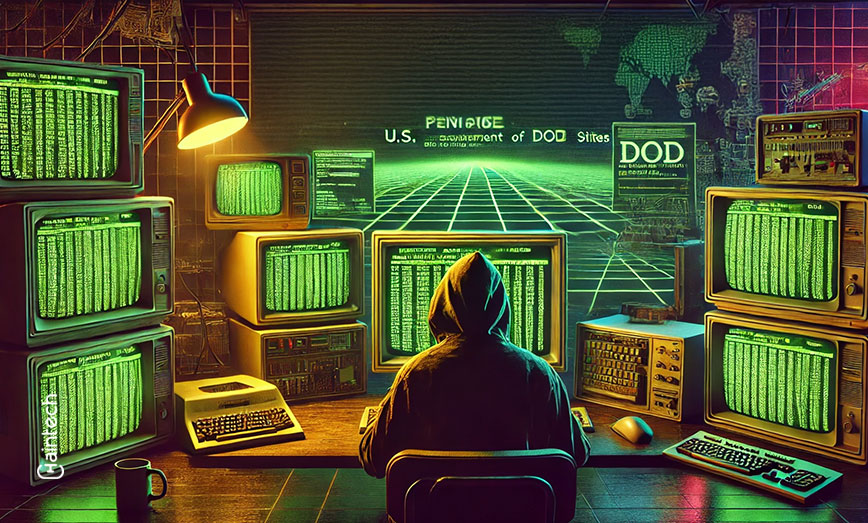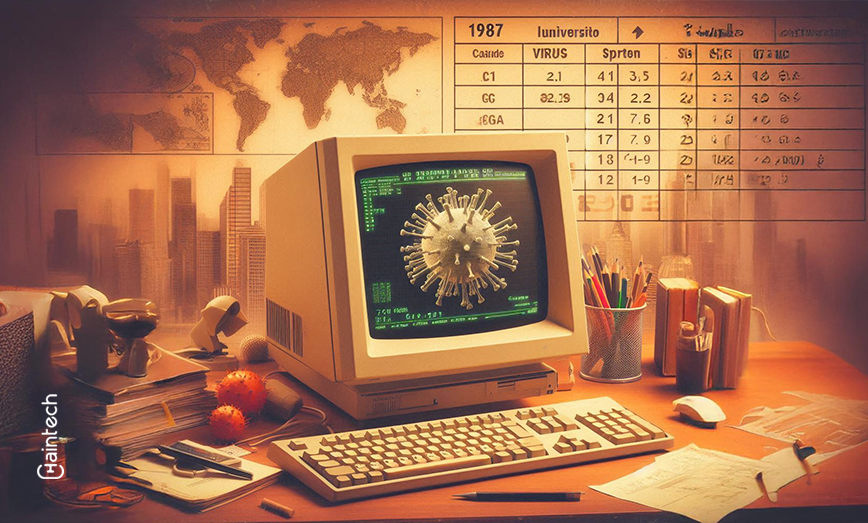1990: Hackers from Netherlands Penetrated DoD Sites

Do you know who the first hackers were? Surprisingly, it was a group of Dutch hackers who, in 1990, managed to penetrate the computer networks of the United States Department of Defense. In fact, they successfully accessed some of the most sensitive yet unclassified military information.
Interestingly, their actions exposed vulnerabilities that had long been overlooked. Consequently, their breach raised serious concerns about national security. Moreover, it highlighted the need for stronger cybersecurity measures. Since then, hacking techniques have evolved significantly. Nevertheless, their story remains a crucial lesson in the history of cybersecurity.
This cyberattack exposed how vulnerable even highly protected military systems were at the time. It wasn’t just about stealing data but about showing that these systems could be breached.
A New Era Begins: How the Attack Transformed U.S. Cybersecurity Strategy
- Vulnerable Military Systems: The DoD sites were far more vulnerable than anyone expected. Hackers found easy ways in.
- Sensitive Data Was Exposed: Although the information wasn’t classified, it was still sensitive. The attack put military operations at risk.
- A paradigm shift: Umbrella cybersecurity is initiated and carried out. After that assault, the US armed forces have been forced to change their entire strategy towards cyberattacks.
Let us delve into the details of the attack itself, the acquired knowledge, and why this event changed the military’s approach to information security forever.
The Story: How Hackers from the Netherlands Broke into DoD Sites
Between 1990 and 1991, Dutch hackers managed to breach 34 of the US Department of Defense’s sites. They didn’t simply stumble upon these sites; instead, they actively searched out their deficiencies. Consequently, they found them.
Breaching any system is an art, and there are no complicated steps involved. For instance, they played around with easy passwords and security software that untethered physical safeguards on vendor accounts. Once inside, they had free rein. Therefore, they could read sensitive emails, browse military directories, and even modify system settings to stay hidden.
The hackers weren’t after random information. Their inquiry was circumscribed to terms such as ‘nuclear,’ ‘weapons,’ and ‘ missile,’ among others. Sometimes, they would use other databases, such as those of U.S. universities, since they knew of the risks they were taking.
These hacks were a huge wake-up call for the military. They came to understand that their systems were not as fortified as they believed them to be. Their cyber defence was deficient, as was demonstrated by the hacking of the Dutch Muslim hacktivists, and change had to occur quicker than ever.
How Did the Hackers Break In?
So, how did the creators of the hack manage to perform such a large complexity of the breach? They used many loopholes in the DoD security as their penetration strategy. Let’s break down the key areas where the military was vulnerable:
| Security Weakness | What Happened? |
| Weak Passwords | Many accounts had simple, easy-to-guess passwords, giving hackers easy access. |
| Outdated Security Protocols | The systems weren’t updated with the latest security patches. |
| Vendor-Supplied Accounts | These accounts were left unsecured, providing an easy entry point. |
| Lack of Monitoring | The DoD systems didn’t have real-time monitoring, so hackers went undetected. |
| Poor Audit Trails | Logs weren’t properly maintained, making it hard to trace the attack. |
These weaknesses allowed the hackers to move through DoD systems without anyone noticing. Once they had access, they explored everything they could find. Emails, directories, and even military personnel information were at risk.
This Attack Is Why There Was a Wake-Up Call
This, however, was not only a cyber assault. It was a major problem.
The fact that Dutch hackers were able to break into 34 military sites sent shockwaves through the Department of Defense. The military had thought their systems were secure. This attack proved they were wrong.
Here’s why this attack was such a huge wake-up call:
- Sensitive Data Exposed, Sensitive Information: There is no need to be classified, but it is Sensitive All the Same. Details about military logistics, personnel, and weapons systems were accessible to hackers.
- Long-Term Threat: The hackers didn’t just break in and leave. They installed “backdoors” in the systems, meaning they could return whenever they wanted. This posed an ongoing threat to national security.
- Global Impact: The hackers didn’t limit their activities to the U.S. military. They connected through networks at universities and commercial sites, spreading their influence across the globe.
- Cover up: As the smug hackers managed to alter some of the system logs, their cover was blown as those logs explained what exactly was taken.
This made the militant hierarchy understand that cyber security was an equal priority to providing physical security. If protection for the systems was eluded, then no amount of fighting soldiers on the ground would make any sense.
Did you know?
The Dutch hackers modified system logs to hide their tracks, making it almost impossible to know what data they accessed.
The Impact of the Attack on U.S. Cybersecurity
The Dutch hacker attack suffered in 1990 did not only impact the Department of Defense. It has an aftershock that reformed how all branches of the US government approached the issue of cyber security.
Following that threat, the military had to change its entire strategy.
They couldn’t just protect classified information. They had to secure everything, from logistics data to personnel records. The attack exposed that even “unclassified” data could be valuable to the wrong people.
Here’s how the attack impacted U.S. cybersecurity:
- Stronger Password Policies: The military implemented stricter password policies in order to deter hackers who may try to intrude into systems.
- Real-Time Monitoring: Systems were upgraded due to a deficiency in the timely detection of attacks, and they included real-time monitoring.
- Encryption Became Standard: Siphoning off sensitive information was made to be in encrypted format to make it difficult for anyone who has acquired access to the information.
- Audit Trails: The military implemented proper logs and audit trails to track who was accessing their systems.
- Vendor Account Security: vendor-supplied accounts, which were often overlooked, were secured and better monitored.
These changes weren’t just a temporary fix. They laid the groundwork for the modern cybersecurity practices we see today.
Did you know?
These hackers stored military data on university systems to avoid detection by the DoD?
What Were the Hackers After?
The Dutch hackers weren’t just poking around. They were looking for specific information that could be useful during international conflicts. So, what exactly where they after?
- Military Personnel Information: They wanted details about U.S. military staff, including their roles and assignments.
- Logistics and Supply Data: Understanding how the U.S. military moves its equipment and resources was a key focus.
- Weapons Systems: The hackers looked for data on U.S. weapons development, which could give them a strategic advantage.
- Sensitive Emails: They searched for emails with terms like “nuclear” and “missile” to gain insight into military operations.
- Unclassified Data: While it wasn’t top-secret, the data could still be used to learn more about how the military operated.
The threat hackers posed by acquiring this information raised concerns for national security. Had this information landed in untrustworthy sources, it would have been bad.
Lessons Learned and Changes Made
The 1990 Dutch hack wasn’t just a one-off event. It adopted the American military attitude towards cybersecurity management in the military. They figured out that their systems were at risk and made it their business to change that.
After the attack, the military implemented several key changes:
- Improved Passwords: Improved passwords were employed on all systems in order to deny insatiable hackers chances of gaining easy entry.
- Encryption Became Important: There was an emphasis on the encryption of sensitive files so that should hackers break in, they would not be able to see it.
- Monitoring Systems: Real-time monitoring was introduced to detect unusual activity immediately.
- Vendor Accounts Secured: Vendor-supplied accounts, which had been a major weakness, were secured and regularly monitored.
- Cybersecurity Training: Personnel received training on how to recognise and prevent cyberattacks.
These changes didn’t just protect the DoD. They helped shape the cybersecurity policies that are still in use today.
The Lasting Impact of the 1990 Dutch Hack on U.S. Cybersecurity
The attack on US DoD sites by Dutch hackers in 1990 brought the military to its senses. There were ideas that everyone thought could never be applicable; data that was not even classified could be a risk if placed in the wrong hands. This ensured that the military had to reconsider their way of approaching the issue of cyber security, and there were better protection strategies as well as improvements in the monitoring systems.
These are the lessons from history that one seeks but finds in vain owing to modernity. Cybersecurity is something very dynamic, and as the course of this subject changes with time, so do the capabilities. However, due to this specific hack, we are better prepared to deal with these threats.
Did you know?
It took several months before the DoD realized how widespread the breach actually was.
FAQs
1. What happened in the 1990 Dutch hacker attack on the DoD?
Hackers from the Netherlands broke into 34 DoD sites, accessing sensitive but unclassified military data.
2. How did the hackers gain access to the DoD systems?
They exploited weak passwords, outdated security protocols, and unsecured vendor accounts.
3. What kind of data did the hackers access?
The hackers accessed information about military personnel, logistics, and weapons systems development.
4. How long did it take for the DoD to realize the breach?
It took several months for the DoD to fully understand the extent of the breach.
5. What changes were made after the attack?
The DoD implemented stronger password policies, real-time monitoring, encryption, and cybersecurity training to prevent future attacks.









